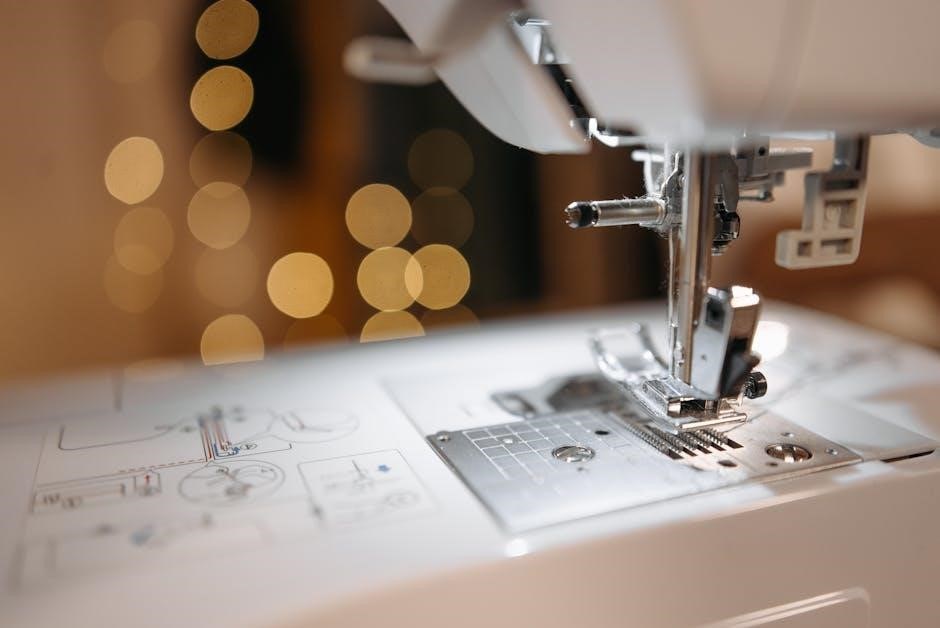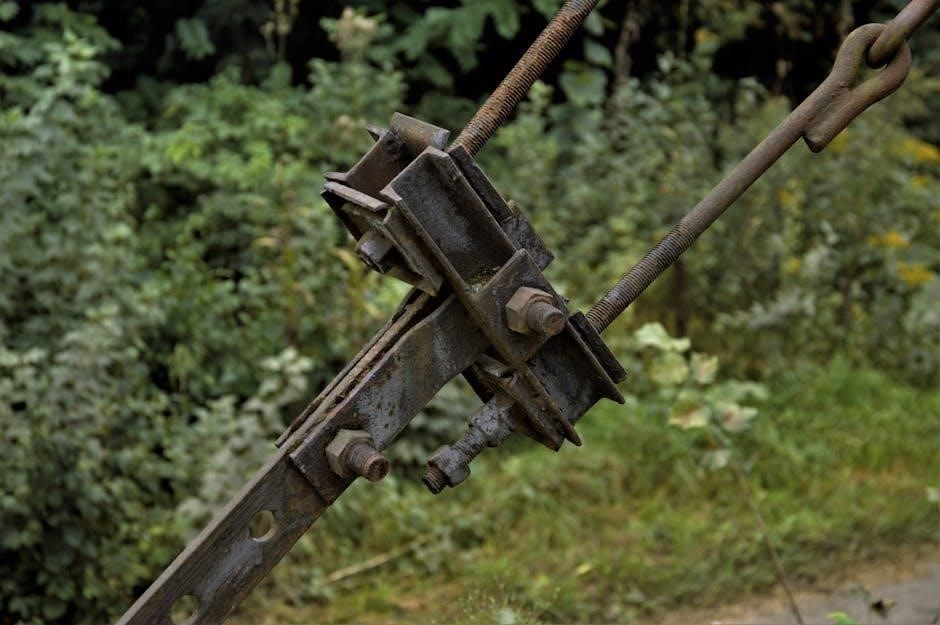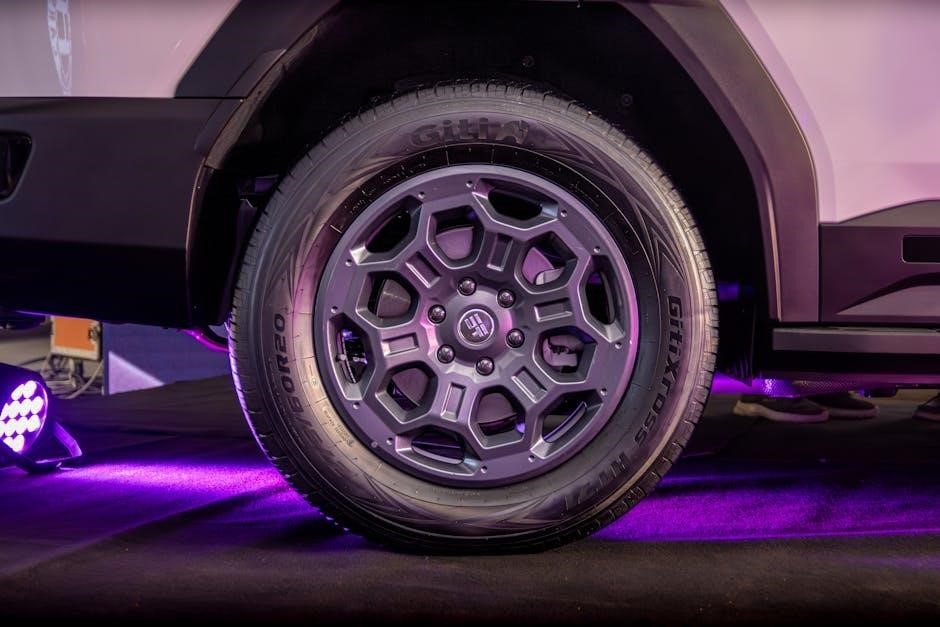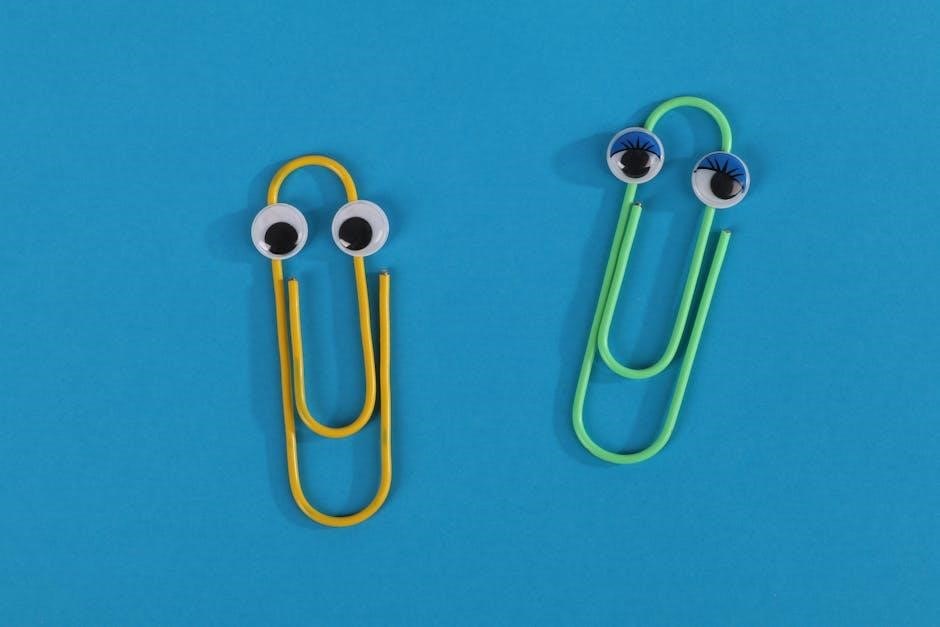
Rubber dam clamps are essential dental tools used to isolate teeth during procedures, ensuring a clean and dry working environment․ They securely hold the rubber dam in place, preventing saliva and bacteria from interfering․ Available in winged and wingless designs, these clamps are crucial for effective isolation in endodontics, restorative dentistry, and other specialized treatments․ Proper clamp selection and placement are vital for patient comfort and procedural success․
1․1 Definition and Purpose
A rubber dam clamp is a dental instrument designed to anchor the rubber dam around a tooth, creating an isolated, dry environment for procedures․ Its primary purpose is to prevent saliva, blood, and bacteria from interfering with the treatment area, enhancing precision and reducing contamination risks․ Clamps are typically made of metal or non-metallic materials and come in winged or wingless designs to accommodate different tooth anatomies․ They are essential for procedures like endodontics, restorative dentistry, and oral surgery, ensuring efficient and safe dental operations․ Proper clamp selection and placement are critical to achieve optimal isolation and patient comfort during treatment․
1․2 Historical Background
The rubber dam clamp has its origins in the mid-19th century, evolving from earlier dental isolation methods․ Initially, dental procedures lacked effective isolation, leading to contamination and inefficiency․ The introduction of rubber dams in 1864 revolutionized dental care, with clamps developed to secure the dam around teeth․ Early clamps were rudimentary, often made of metal, and designed to hold the rubber in place․ Over time, advancements in materials and design improved their functionality, making them indispensable in modern dentistry․ Today, rubber dam clamps remain a cornerstone of dental procedures, ensuring a clean, dry environment for precise and safe treatments․ Their historical development underscores their critical role in advancing dental care․
1․3 Importance in Dental Procedures
Rubber dam clamps are essential for maintaining a sterile and dry environment during dental procedures․ They prevent contamination from saliva, blood, and bacteria, ensuring precise and safe treatments․ By isolating the working area, clamps enhance visibility, allowing dentists to focus on intricate details․ They also protect soft tissues, reducing the risk of chemical or mechanical damage․ Additionally, clamps minimize operative time by maintaining a clean field, which is critical for successful outcomes in procedures like endodontics and restorations․ Their role in preventing cross-contamination further highlights their importance in modern infection control protocols, making them a vital tool in contemporary dental practice․

Types of Rubber Dam Clamps
Rubber dam clamps are categorized into metallic, non-metallic, and winged or wingless designs, each offering unique advantages for specific dental procedures and patient anatomies․
2․1 Metallic Clamps
Metallic clamps are the most commonly used type, known for their durability and strength․ Typically made from stainless steel or titanium, they provide a secure grip on teeth․ Their rigid design ensures excellent retention, making them ideal for procedures requiring precise isolation․ However, they can be less comfortable for patients due to their hardness and may conduct heat or cold․ Proper placement is crucial to avoid causing minor trauma to the gingiva․ Despite these drawbacks, metallic clamps remain a popular choice in dental practices due to their reliability and ease of sterilization․ They are widely used in endodontic and restorative procedures․
- Durable and long-lasting․
- Excellent for procedures needing firm grip․
- May cause discomfort or minor trauma if misapplied․
2․2 Non-Metallic Clamps
Non-metallic clamps, often made from materials like nylon or polycarbonate, are a flexible alternative to metallic clamps․ They are lightweight and reduce the risk of tooth or gingival trauma, making them ideal for sensitive patients․ While they may lack the rigidity of metallic clamps, they still provide adequate retention for many procedures․ Non-metallic clamps are particularly useful in pediatric dentistry or for patients with fragile teeth․ However, they may not be as durable and can be more prone to wear․ Despite this, they offer a comfortable and gentle option for isolation, balancing patient comfort with functional effectiveness in various dental scenarios․
- Lightweight and flexible design․
- Reduced risk of trauma to teeth or gums․
- Suitable for sensitive or pediatric patients․
2․3 Winged vs․ Wingless Clamps
Winged clamps feature additional projections that enhance retention, making them ideal for teeth with complex anatomy․ These wings provide extra grip, reducing the likelihood of clamp displacement․ However, their bulkier design may limit accessibility in tight spaces․ Wingless clamps, in contrast, offer a slimmer profile, improving visibility and ease of use in confined areas․ They are better suited for simpler cases but may lack the retention strength of winged clamps․ The choice between the two depends on the procedure’s requirements and the patient’s dental anatomy․ Both designs aim to ensure effective isolation, but their structural differences cater to specific clinical needs․
- Winged clamps provide superior retention due to additional gripping surfaces․
- Wingless clamps are sleeker, enhancing accessibility in tight spaces․
- Selection depends on the procedure and patient anatomy․

Selection Criteria for Rubber Dam Clamps
Selection criteria for rubber dam clamps include tooth anatomy, procedure specifics, and patient comfort to ensure effective isolation and successful outcomes․
3․1 Tooth Anatomy Considerations
Tooth anatomy plays a critical role in selecting the appropriate rubber dam clamp․ The size, shape, and alignment of teeth, as well as the presence of restorations or anomalies, influence clamp choice․ For instance, teeth with large restorations or unusual morphology may require specialized clamps to ensure proper fit and retention․ Interdental spaces and gingival contours also affect clamp selection, as improper fit can lead to poor isolation or tissue damage․ Understanding these anatomical factors ensures the clamp securely holds the rubber dam in place, maintaining isolation and procedural efficiency․ Accurate selection is vital to avoid complications and ensure patient comfort during dental procedures․
3․2 Procedure-Specific Requirements
Procedure-specific requirements significantly influence the selection of rubber dam clamps․ For instance, endodontic procedures often demand clamps with precise retention to ensure optimal isolation of the tooth․ In restorative dentistry, clamps with minimal interference to adjacent teeth are preferred to facilitate access․ Pediatric cases may require smaller, lightweight clamps to accommodate primary teeth and enhance patient comfort․ Surgical procedures might necessitate clamps with added durability to withstand rigorous manipulation․ The type of anesthesia, patient anatomy, and the need for visibility also play roles in determining the most suitable clamp․ Matching the clamp to the procedure ensures efficiency, safety, and effective isolation, optimizing treatment outcomes;
3․4 Patient Comfort and Safety
Patient comfort and safety are paramount when selecting and using rubber dam clamps․ Clamp design should prioritize soft, rounded edges to avoid causing discomfort or tissue irritation․ The material must be biocompatible to prevent allergic reactions․ Properly fitting clamps ensure even pressure distribution, minimizing the risk of nerve trauma or pain․ Ensuring the clamp is securely placed prevents accidental displacement, which could harm the patient․ Additionally, selecting the correct size and type minimizes the risk of forcing the clamp, which could damage teeth or gingiva․ Prioritizing comfort and safety enhances patient trust and ensures a positive experience during dental procedures, making treatment more tolerable․

Clinical Applications of Rubber Dam Clamps
Rubber dam clamps are essential in various dental specialties, ensuring isolation and efficiency․ They are widely used in endodontics, restorative dentistry, pediatric care, and oral surgery, enhancing precision and patient safety․
4․1 Endodontic Procedures
Rubber dam clamps play a crucial role in endodontic procedures by providing precise isolation of the tooth․ This isolation is essential for preventing contamination during root canal treatments, ensuring a sterile environment for effective therapy․ The clamp’s design helps in maintaining the rubber dam securely, allowing unrestricted access to the canal․ Proper placement of the clamp minimizes the risk of bacterial ingress, which is critical for successful endodontic outcomes․ Additionally, it aids in protecting the patient from accidental ingestion of small instruments or debris․ The use of rubber dam clamps in endodontics enhances visibility, simplifies the procedure, and contributes to faster treatment times while maintaining patient safety and comfort․
4․2 Restorative Dentistry
Rubber dam clamps are invaluable in restorative dentistry, providing a clean, dry environment essential for precise cavity preparation and restoration placement․ By isolating the tooth, they prevent contamination from saliva and blood, ensuring the longevity of restorative materials like composite resins․ The clamp’s stability allows for accurate impressions and bonding procedures, minimizing the risk of errors․ Additionally, it protects the patient from swallowing or aspirating small restorative components․ In procedures such as fillings, crowns, or veneers, rubber dam clamps enhance efficiency and accuracy, making them a cornerstone in modern restorative dental practices․ Their versatility accommodates various tooth sizes and anatomical challenges, ensuring optimal outcomes․
4․3 Pediatric Dentistry
Rubber dam clamps play a crucial role in pediatric dentistry by ensuring effective tooth isolation during procedures like fillings, extractions, and pulp therapy․ Their use minimizes the risk of swallowing small instruments or materials, enhancing patient safety․ The clamps also prevent saliva and blood interference, improving visibility and access to the operating area․ In pediatric cases, rubber dam clamps help reduce anxiety by limiting the child’s sensation of water and debris․ Additionally, they aid in maintaining a clean, dry environment, which is essential for adhesive restorative materials․ Properly sized clamps are selected to accommodate smaller teeth, ensuring comfort and efficacy in young patients․

4․4 Oral Surgery
Rubber dam clamps are invaluable in oral surgery for maintaining a clean, dry surgical field, enhancing visibility, and preventing contamination․ They are commonly used during extractions, implant placements, and soft tissue procedures․ The clamps securely isolate the surgical site, minimizing interference from saliva, blood, and debris․ This isolation is crucial for precise dissection and hemostasis․ In complex cases, rubber dam clamps help manage difficult anatomies by stabilizing surrounding tissues․ They also protect the patient from accidental ingestion of small instruments or materials․ Their use in oral surgery ensures a safer, more controlled environment, contributing to successful outcomes and reducing post-operative complications․ Proper clamp selection is essential for optimal results․

Techniques for Using Rubber Dam Clamps
Mastering rubber dam clamp techniques ensures effective isolation and patient safety․ Proper placement, adjustment, and removal are critical for successful procedures․ Ergonomic handling enhances precision and efficiency․
- Ensure proper clamp selection based on tooth anatomy․
- Use gentle yet firm force during placement․
- Check for adequate sealing to prevent leakage․
- Adjust clamps as needed for patient comfort․
5․1 Proper Placement and Fixation
Proper placement and fixation of rubber dam clamps are essential for effective tooth isolation․ Start by assessing the tooth anatomy to select the appropriate clamp size․ Position the clamp gently but firmly, ensuring the metal bands encircle the tooth below the gumline․ Avoid excessive force to prevent damage to the tooth or gingiva․ Use dental floss or a scaler to adjust the clamp’s position if necessary․ Ensure the clamp is snug but not overly tight to maintain patient comfort․ Double-check the seal by inspecting the margins and suction testing․ Proper fixation prevents movement during procedures, ensuring accuracy and reducing complications․
5․2 Achieving Optimal Isolation
Achieving optimal isolation with rubber dam clamps requires precision and attention to detail․ Ensure the clamp is securely positioned around the tooth, with the rubber dam tightly sealing the margins․ Properly place the dam to cover adjacent teeth if needed, preventing cross-contamination․ Check for any gaps or leaks by gently probing the edges․ Use additional accessories like ligatures or clamp extenders for complex cases; Ensure the dam is taut but not overly stretched to avoid discomfort․ Verify isolation by testing the seal with air or water․ Proper isolation enhances visibility, prevents contamination, and ensures a controlled environment for successful procedures․ It is crucial for maintaining sterility and efficiency in dental treatments․
5․3 Handling Difficult Anatomies
Handling difficult anatomies with rubber dam clamps requires adaptability and precision․ For teeth with unusual shapes, deep undercuts, or limited access, use specialized clamps or modify techniques․ In cases of crowded teeth, consider using wingless clamps or adjusting the clamp’s position to avoid interference․ For sensitive or fragile gingiva, gentle placement and minimal force are essential․ Utilize additional tools like clamp extenders or ligatures to enhance retention․ Properly assess the tooth anatomy beforehand to select the most suitable clamp․ Technique adjustments, such as angling the clamp or using alternative isolation methods, may be necessary․ Effective handling ensures patient comfort and procedural success, even in challenging cases․

Maintenance and Care of Rubber Dam Clamps
Regular maintenance ensures longevity and effectiveness․ Clean clamps thoroughly, store them properly, and inspect for wear․ Sterilize after each use and organize for easy access․
6․1 Cleaning and Sterilization
Cleaning and sterilizing rubber dam clamps are crucial for infection control․ Use mild detergents and ultrasonic cleaners to remove debris․ Rinse thoroughly with sterile water and dry․ Autoclaving is recommended for sterilization, ensuring all surfaces are disinfected․ Chemical vapor sterilization is an alternative for heat-sensitive materials․ Always follow manufacturer guidelines to avoid damage․ Proper cleaning prevents cross-contamination and maintains clamp effectiveness․ Sterilize after each use to ensure patient safety and extend the lifespan of the clamps․
6․2 Storage and Organization
Proper storage and organization of rubber dam clamps are essential for maintaining their functionality and longevity․ Store clamps in protective cases or containers to prevent damage and contamination․ Use dividers or compartments to organize clamps by size or type, ensuring easy access during procedures․ Keep them in a cool, dry place away from direct sunlight to avoid material degradation․ Label storage containers for quick identification․ Regularly inspect stored clamps for signs of wear or damage․ Avoid overcrowding to prevent bending or misalignment․ Organized storage enhances efficiency and ensures clamps remain in optimal condition for future use․
6․3 Repair and Replacement
Regular inspection of rubber dam clamps is crucial to identify damage or wear․ Minor repairs, such as adjusting bent metal components or replacing worn rubber dams, can extend their lifespan․ However, severely damaged clamps should be replaced to ensure patient safety and procedural efficiency․ Corrosion, misalignment, or excessive flexibility are signs that a clamp needs replacement․ Always use manufacturer-recommended repair kits or replacement parts․ Improper repairs can compromise the clamp’s performance․ Replace clamps periodically, even if damage is not visible, as frequent use can lead to subtle structural weakening․ Timely replacement ensures optimal functionality and maintains dental procedure standards․

Troubleshooting Common Issues
Addressing issues like poor clamp retention, soft tissue damage, or limited visibility ensures efficient dental procedures․ Adjusting clamp size, improving placement, and using auxiliary tools can resolve these problems effectively․
7․1 Poor Retention of the Clamp
Poor retention of the rubber dam clamp can hinder effective isolation, leading to procedural challenges․ This issue often arises from improper clamp selection, inadequate placement, or insufficient engagement of the undercut areas․ Additionally, contamination or damage to the clamp’s surface can reduce its retention capacity․ To address this, ensure the clamp is appropriately sized for the tooth anatomy and that it is seated correctly, with the prongs firmly engaging the cervical third․ Regular cleaning and inspection of the clamp are crucial to maintain its retention properties․ Using adhesive powders or repositioning the clamp may also enhance stability and prevent displacement during procedures․
7․2 Damage to Tooth or Gingiva
DAMAGE to the tooth or gingiva during rubber dam clamp placement is a common issue that can lead to patient discomfort and procedural delays․ Improper clamp placement, excessive force, or using a clamp that is too large for the tooth anatomy are frequent causes․ To prevent damage, ensure the clamp is carefully positioned, avoiding excessive pressure․ Using a clamp with rounded edges or a soft tissue guard can minimize trauma․ Regularly inspecting the clamp for sharp edges or corrosion is also essential․ Proper training and gentle handling are critical to safeguarding the tooth and gingival tissues during the procedure․
7․3 Limited Visibility and Accessibility
LIMITED visibility and accessibility can hinder effective use of rubber dam clamps, particularly in complex anatomical cases․ Deep cavities, posterior teeth, or unusual tooth shapes may obstruct clear visualization, making clamp placement challenging․ To address this, clinicians can use clamps with angled or curved designs, which improve access to hard-to-reach areas․ Auxiliary tools, such as mirrors or fiber-optic illumination, can enhance visibility․ Additionally, selecting clamps with adjustable or retractable components allows for better maneuverability․ Proper training and experience are essential to navigate these limitations effectively, ensuring successful isolation without compromising patient care or procedural efficiency․

Comparison with Alternative Isolation Methods
Rubber dam clamps offer superior isolation compared to alternatives like cotton rolls or saline-soaked gauze, providing a dry field and reducing contamination risks significantly․
8․1 Advantages Over Traditional Methods
Rubber dam clamps offer significant advantages over traditional isolation methods like cotton rolls or gauze․ They provide a more reliable and consistent dry field, reducing saliva and blood contamination․ Unlike cotton, which can absorb fluids and lose shape, rubber dams maintain their integrity, ensuring better infection control․ They also improve visibility and accessibility for precise dental work․ Additionally, rubber dams minimize the risk of swallowing or inhaling small objects, enhancing patient safety․ Their reusability and durability make them a cost-effective option, while their versatility accommodates various dental procedures, from endodontics to restorative work, making them a preferred choice for modern dentistry․
8․2 Limitations and Drawbacks
Rubber dam clamps have specific limitations that can hinder their effectiveness in certain situations․ One major drawback is patient discomfort, especially if the clamp presses on sensitive gingiva or tight contacts․ This can lead to anxiety and difficulty in maintaining cooperation․ Additionally, clamps may not fit properly on teeth with unusual anatomy, such as malformed or crowded teeth, requiring time-consuming adjustments․ The initial cost of high-quality clamps can also be prohibitive for some practices․ Furthermore, improper placement or tight clamping can cause trauma to the tooth or surrounding tissues․ These challenges highlight the need for skill and care when using rubber dam clamps effectively․
8․3 When to Choose Alternative Methods
Alternative isolation methods may be preferable in specific clinical scenarios․ For non-complex procedures where rubber dam clamps are impractical, cotton rolls or suction devices can suffice․ In cases of severe patient anxiety or gagging reflex, less invasive techniques may improve comfort․ When treating pediatric or special needs patients, alternative methods often reduce stress and facilitate cooperation․ Additionally, if a tooth’s anatomy is highly irregular or fragile, avoiding clamps prevents potential damage․ Cost and availability also influence choices, as some practices may opt for cheaper alternatives․ Ultimately, the decision hinges on balancing isolation needs with patient-specific factors, ensuring efficient and stress-free treatment outcomes․

Innovations and Future Trends
Innovations in rubber dam clamps focus on advanced materials, ergonomic designs, and digital integration, enhancing efficiency, patient comfort, and procedural accuracy, shaping the future of isolation․
9․1 Material Advancements
Recent advancements in rubber dam clamp materials focus on durability, biocompatibility, and infection control․ Titanium alloys are now widely used for their corrosion resistance and lightweight properties․ Biocompatible polymers reduce allergic reactions and improve patient safety․ Antimicrobial coatings inhibit bacterial growth, enhancing sterility during procedures․ Additionally, innovations in rubber dam materials include thermoplastic elastomers, offering superior flexibility and tear resistance․ These advancements ensure clamps are both patient-friendly and environmentally sustainable․ Researchers are also exploring eco-friendly materials to align with global sustainability goals․ Such innovations promise to revolutionize dental isolation, combining strength, comfort, and safety for optimal clinical outcomes․
9․2 Ergonomic Designs
Ergonomic designs in rubber dam clamps prioritize comfort and efficiency for dental professionals․ Modern clamps feature contoured handles that reduce hand fatigue during prolonged procedures․ Lightweight materials and balanced construction improve maneuverability, allowing precise placement and adjustment․ Adjustable tension controls enable customized grip strength, minimizing pressure on teeth and surrounding tissues․ Patient-centric designs incorporate rounded edges and soft-touch surfaces to enhance comfort․ These innovations reduce strain on the dentist’s hands and wrists, promoting long-term occupational health․ Enhanced ergonomics also improve accessibility, making clamps easier to handle for dentists with varying hand sizes or preferences․ Such designs contribute to a more efficient and stress-free clinical environment․
9․3 Digital Integration in Clamp Technology
Digital integration in rubber dam clamps is revolutionizing dental procedures through advanced technological innovations․ Smart clamps now feature sensors that monitor and adjust pressure in real-time, ensuring optimal tooth grip without causing damage․ Wireless connectivity allows clamps to sync with dental software, providing detailed records of procedures․ Some models incorporate CAD/CAM technology for customizable fit and enhanced precision․ Additionally, AI-driven systems analyze clamp performance, offering predictive maintenance alerts․ Touch-sensitive handles and augmented reality integration are also being explored to improve ergonomics and training․ These digital advancements aim to streamline workflows, improve patient outcomes, and reduce human error, making rubber dam clamps more efficient and reliable tools in modern dentistry․
Rubber dam clamps remain essential tools in modern dentistry, offering precision, isolation, and patient safety․ Their evolution, from traditional designs to innovative digital integrations, ensures continued relevance and efficiency in clinical practices․
10․1 Summary of Key Points
Rubber dam clamps are indispensable tools in dentistry, providing effective tooth isolation for various procedures․ They come in metallic and non-metallic types, with winged or wingless designs, catering to diverse clinical needs․ Proper selection considers tooth anatomy, procedure requirements, and patient comfort․ Their applications span endodontics, restorative dentistry, pediatrics, and oral surgery․ Techniques focus on precise placement, optimal isolation, and handling challenging anatomies․ Maintenance involves thorough cleaning, sterilization, and organized storage․ Troubleshooting addresses retention issues, tissue damage, and visibility challenges․ Compared to alternatives, rubber dam clamps offer superior isolation but may have limitations․ Continuous innovations, such as material advancements and ergonomic designs, enhance their functionality and efficiency in modern dental practices․
10․2 Best Practices for Effective Use
For optimal results, select clamps based on tooth anatomy and procedure type․ Ensure precise placement to avoid soft tissue trauma, using a mirror for visibility․ Tighten clamps gently but firmly for a secure seal․ Regularly inspect and maintain clamps to prevent wear and tear․ Prioritize patient comfort by explaining the procedure and ensuring proper fit․ Sterilize clamps after each use to maintain infection control․ Practice proper isolation techniques to enhance procedure efficiency and safety․ Stay updated with advancements in clamp design and materials to improve outcomes․ Consistent training and experience are key to mastering rubber dam clamp usage in various clinical scenarios․
10․3 Final Thoughts on Rubber Dam Clamps
Rubber dam clamps remain indispensable in modern dentistry, offering precise isolation and enhancing procedure efficiency․ Their versatility across endodontic, restorative, and surgical applications underscores their universal value․ Despite advancements, their fundamental role in preventing contamination and ensuring patient safety remains unchanged․ Modern designs integrate ergonomic and material innovations, catering to diverse clinical needs․ Proper selection, placement, and maintenance are crucial for optimal performance․ As dentistry evolves, rubber dam clamps continue to be a cornerstone, adapting to new challenges while retaining their essential function․ Their enduring relevance highlights their significance in advancing dental care and patient outcomes․